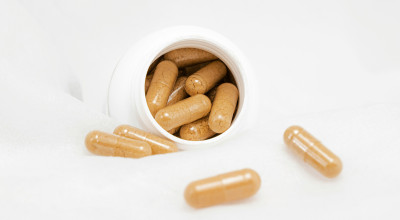Kratom vs 7-OH: Two Clients’ Stories of Struggle and Hope
September 1st, 2025
As we let you know in this blog post, Kratom and 7-hydroxymitragynine (7-OH) may seem like “natural” alternatives to opioids—but at Windmill Wellness Ranch, we’ve witnessed how easily they can lead to dependence and despair. In this post, two clients bravely shared their personal journeys—not just to warn others, but to show that recovery is possible.
What Are Kratom and 7-OH?
Kratom (Mitragyna speciosa) is a Southeast Asian plant used in teas or powders. In small amounts, it can act like a stimulant; in larger doses, it produces opioid-like effects. However, 7-OH is far more potent and is often sold in concentrated, extract-based products like chewables or vapes.
A single 30 mg 7-OH chewable can deliver opioid-like effects comparable to covered oxycodone doses—yet it’s widely available without medical oversight [1].
Case Study 1: From “Herbal Curiosity” to 7-OH Addiction
This client had been in recovery after treatment in Florida and stayed sober for four years. He turned to kratom believing it was harmless.
“It felt like a caffeine buzz at first. I thought I had found something harmless. But within six months I was drinking it every day. I realized it was habit forming, but I couldn’t stop.”
When kratom stopped working, he was steered toward 7-OH at a smoke shop.
“He said, ‘Have you tried 7OH? It’s like stronger kratom.’ Nothing about it being addictive, nothing about the risks.”
Within a month, he was consuming five 30 mg tablets per day. Despite working in IT and planning a move to California, nearly all of his income was swallowed by the addiction.
“I was losing weight, not eating, and just sitting in front of the TV. It was the same cycle I’d gone through on opioids—and I got really depressed.”
Withdrawal symptoms—restless legs, insomnia, crushing depression—led him back to kratom briefly, just to reduce the pain. Finally, with encouragement from his loved ones, he sought treatment at Windmill.
Case Study 2: A Rapid Descent into Dependence
This client first encountered 7-OH while in sober living, introduced by a friend.
“I started with half a pill—15 mg—and within 20 minutes I had to pull over my car because it hit me so hard. I felt tired, euphoric, and completely at ease.”
Tolerance built fast. He soon took up to eight 30 mg pills daily—around 150 mg per day.
“Compared to kratom, it was at least ten times stronger. I spent most of my days in bed, isolated from everyone. The withdrawals were the worst I’ve ever experienced. My body was on fire, I had cold sweats, chills, and crippling anxiety.”
Reflecting on his experience:
“If someone I cared about was thinking of trying 7OH, I’d tell them it can ruin your life really quickly. The tolerance builds in days, and the withdrawals are worse than opiates. If it became illegal tomorrow, I would celebrate—it shouldn’t be legal at all.”
Why Do People Get Hooked on Kratom and 7-OH?
These stories highlight key risk factors:
- Misleading marketing: Kratom and 7-OH are often sold as “herbal” and “natural” despite their opioid-like strength .
- Wide availability: Easily purchased at smoke shops, gas stations, and online.
- Unregulated potency: Extracts like 7-OH can vary widely in strength, increasing overdose risk [2].
- Rapid tolerance and severe withdrawal: Dependence can develop quickly, with painful symptoms when use stops.
- Lack of dosing guidance: Consumers often have no idea how much they’re taking [3].
Treatment and Recovery

Recovery is possible—but rarely without professional help. Treatment at Windmill starts with medical detox to safely manage withdrawal, followed by evidence-based therapies and brain-focused treatments like neurofeedback and TMS. Family therapy helps rebuild relationships and support systems.
How to Support a Loved One Struggling with Kratom or 7-OH
If someone you care about is using kratom or 7-OH:
- Speak with empathy, not blame.
- Educate yourself—these substances act like opioids, not dietary supplements.
- Encourage professional treatment rather than self-detox.
- Join family therapy or support groups to develop healthy boundaries and compassion.
Our Approach at Windmill Wellness Ranch
We are among the few treatment centers addressing kratom and 7-OH addiction directly. Our holistic program combines medical detox, advanced neurotechnology, evidence-based therapies, and strong alumni and family support.
We’re also partnering with Johns Hopkins University to advance research into effective treatment and policy solutions for 7-OH and similar emerging substances.
Hope and Recovery Are Possible
These two clients’ stories show how swiftly kratom and 7-OH can take hold—and how recovery remains within reach. With the proper care, restoration is real. If you or someone you love is struggling, Windmill Wellness Ranch is ready to walk with you toward healing. Call 830-223-2055 or contact us online.
References
[1] McCurdy, C. R., Sharma, A., Smith, K. E., Veltri, C. A., Weiss, S. T., White, C. M., & Grundmann, O. (2024). An update on the clinical pharmacology of kratom: uses, abuse potential, and future considerations. Expert Review of Clinical Pharmacology, 17(2), 131-142.
[2] Demick, D. S., Lee, T. T., Summers, A. T., & El-Mallakh, R. S. (2020). Kratom: a growing substance of abuse in the United States. Annals of Clinical Psychiatry, 32(3), 8-13.
[3] Knopf, A. (2025). FDA takes steps to restrict kratom byproduct. Alcoholism & Drug Abuse Weekly, 37(30), 8-8.
FAQs
Is 7-OH the same as kratom?
No—while present in kratom, 7-OH is far stronger when concentrated and much more addictive.
Can withdrawal be dangerous?
Kratom and 7-OH withdrawals can be intense, featuring restlessness, anxiety, chills, and depressive symptoms. Medical detox is safest.
Why is 7-OH still legal?
It remains in a legal gray zone, often sold as a supplement despite acting like an opioid.
Is treatment for 7-OH the same as other opioids?
Similar—but must be customized. At Windmill, treatment includes detox, therapies, brain-based healing, and alumni support.


